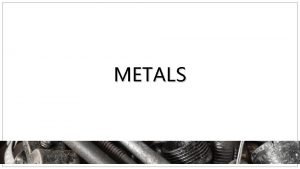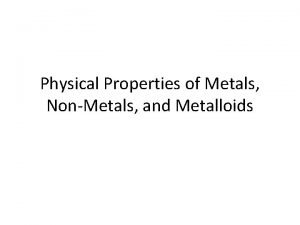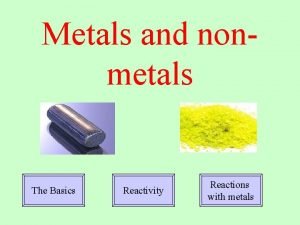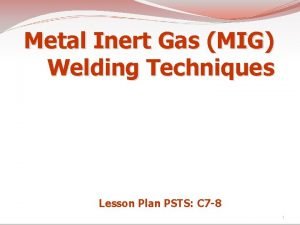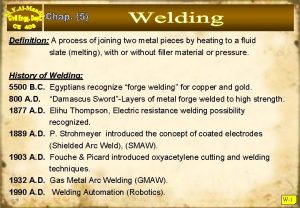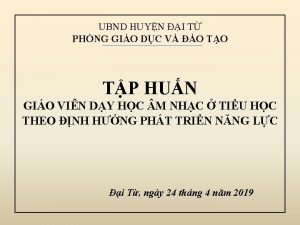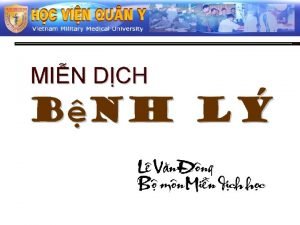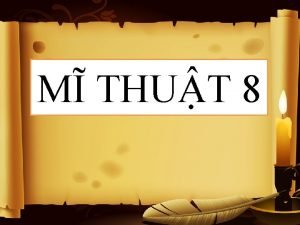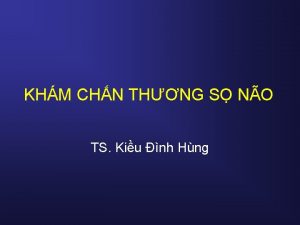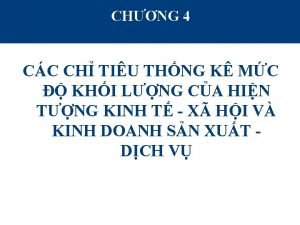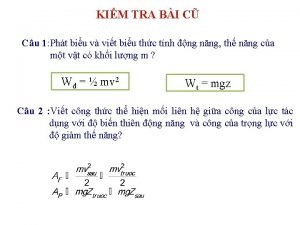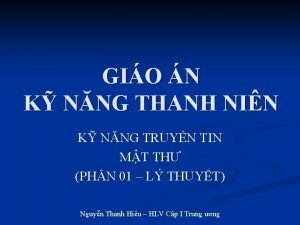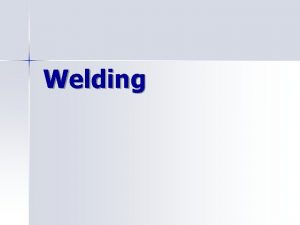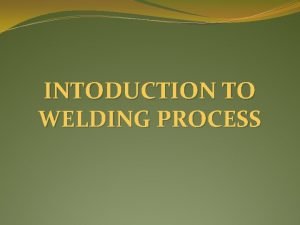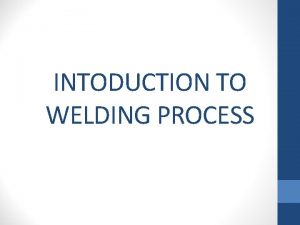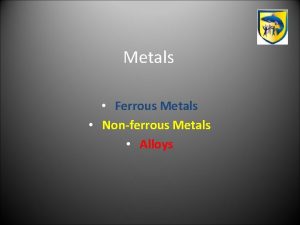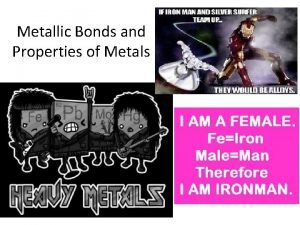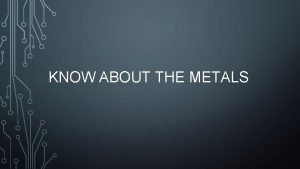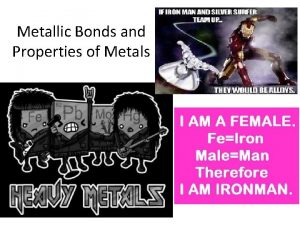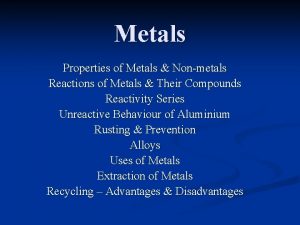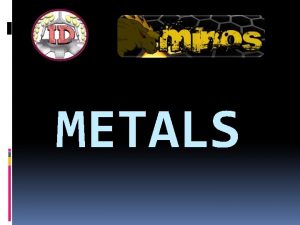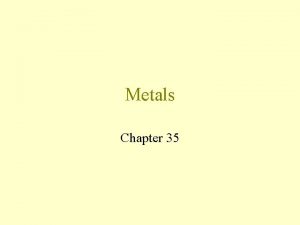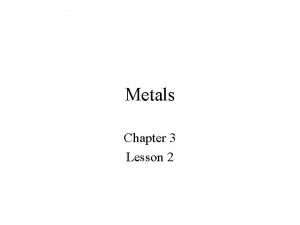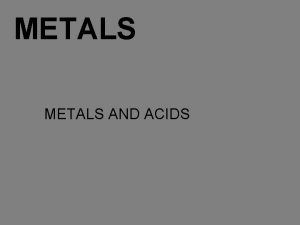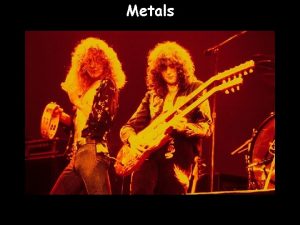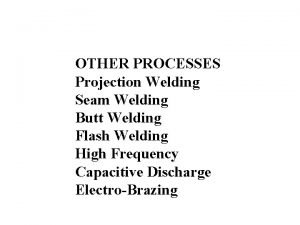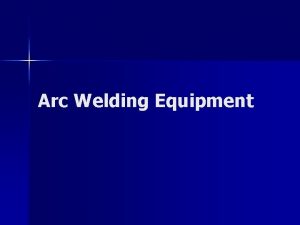Welding of Metals Welding Welding is the process





















- Slides: 21

Welding of Metals

Welding • Welding is the process of joining together pieces of metal or metallic parts by bringing them into intimate proximity and heating the place of content to a state of fusion or plasticity

following are the key features of welding: • The welding structures are normally lighter than riveted or bolted structures. • The welding joints provide maximum efficiency, which is not possible in other type of joints. • The addition and alterations can be easily made in the existing structure. • A welded joint has a great strength. • The welding provides very rigid joints. • The process of welding takes less time than other type of joints.

largely used in the following fields of engineering: • Manufacturing of machine tools, auto parts, cycle parts, etc. • Fabrication of farm machinery & equipment. • Fabrication of buildings, bridges & ships. • Construction of boilers, furnaces, railways, cars, aeroplanes, rockets and missiles. • Manufacturing of television sets, refrigerators, kitchen cabinets, etc.

Classification according to source of energy employed to heating the metal

Gas Welding • Oxy-acetylene Welding: Ca. C 2 + 2 H 2 O = Ca (OH)2 + C 2 H 2+2. 5 O 2= 2 CO 2+H 2 O(vapour)+ 306. 800 cal /mol

Gas welding Apparatus 1. Oxygen cylinder 2. Acetylene cylinder 3. Pressure gauges 4. Valves 5. Hose pipes 6. Torch 7. Welding tip 8. Pressure regulators 9. Lighter 10. Goggles



Gas welding two types

Gas welding torch

Welding Goggles

ELECTRIC ARC WELDING The welding in which the electric arc is produced to give heat for the purpose of joining two surfaces is called electric arc welding.

Principle of Arc • A suitable gap is kept between the work and electrode • A high current is passed through the circuit. • The electric energy is converted into heat energy, producing a temperature of 3000°C to 4000°C. • This heat melts the edges to be welded and molten pool is formed. • On solidification the welding joint is obtained

Arc Welding


Electric Power for Welding • AC current or DC current can be used for arc welding. For most purposes, DC current is preferred. • D. C. machines are made up to the capacity range of 600 amperes. • 45 to 95 volts • D. C. current can be given in two ways: (a) Straight polarity welding. (b) Reverse polarity

Arc welding power supply by 2 types For Thin Metals

Types of Electrodes Coated electrodes Bare electrodes

TYPES OF JOINTS • Butt Joint

TYPES OF JOINTS • Lap joint • T- joint • Corner joint
 Non metals in the periodic table
Non metals in the periodic table Examples of alloy metals
Examples of alloy metals Metals and non metals
Metals and non metals Mixture of materials grade 6
Mixture of materials grade 6 Natural science grade 7 lesson plans term 2
Natural science grade 7 lesson plans term 2 Is sodium a metal or nonmetal
Is sodium a metal or nonmetal Mig weld technique
Mig weld technique How to join two iron pieces
How to join two iron pieces Hát kết hợp bộ gõ cơ thể
Hát kết hợp bộ gõ cơ thể Lp html
Lp html Bổ thể
Bổ thể Tỉ lệ cơ thể trẻ em
Tỉ lệ cơ thể trẻ em Gấu đi như thế nào
Gấu đi như thế nào Chụp phim tư thế worms-breton
Chụp phim tư thế worms-breton Chúa yêu trần thế
Chúa yêu trần thế Môn thể thao bắt đầu bằng từ đua
Môn thể thao bắt đầu bằng từ đua Thế nào là hệ số cao nhất
Thế nào là hệ số cao nhất Các châu lục và đại dương trên thế giới
Các châu lục và đại dương trên thế giới Công của trọng lực
Công của trọng lực Trời xanh đây là của chúng ta thể thơ
Trời xanh đây là của chúng ta thể thơ Mật thư tọa độ 5x5
Mật thư tọa độ 5x5 101012 bằng
101012 bằng

